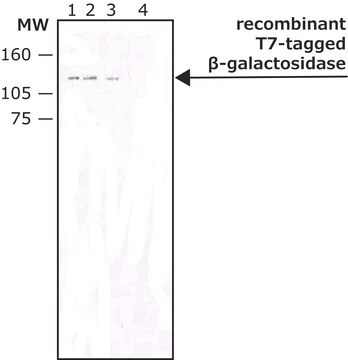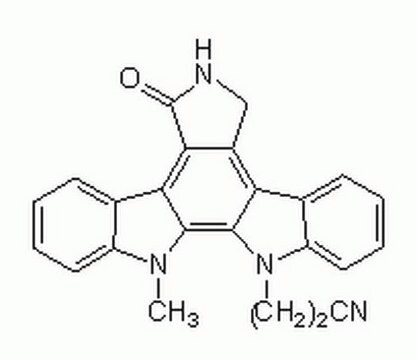SRP3210
IL-33 from mouse
recombinant, expressed in E. coli, ≥98% (SDS-PAGE), ≥98% (HPLC), suitable for cell culture
Synonym(s):
NF-HEV
Sign Into View Organizational & Contract Pricing
All Photos(1)
About This Item
UNSPSC Code:
12352202
NACRES:
NA.32
Recommended Products
biological source
mouse
recombinant
expressed in E. coli
Assay
≥98% (HPLC)
≥98% (SDS-PAGE)
form
lyophilized
potency
≤10 ng/mL ED50
mol wt
17.5 kDa
packaging
pkg of 10 μg
technique(s)
cell culture | mammalian: suitable
impurities
<0.1 EU/μg endotoxin, tested
color
white to off-white
UniProt accession no.
shipped in
wet ice
storage temp.
−20°C
Gene Information
mouse ... IL33(77125)
General description
IL-33 (interleukin 33) is an IL-1 family member, and shows high expression levels in endothelial cells and epithelium, such as keratinocytes, that are in direct contact with the environment.
Recombinant murine IL-33 is a 17.5kDa protein containing 158 amino acid residues.
Recombinant murine IL-33 is a 17.5kDa protein containing 158 amino acid residues.
Biochem/physiol Actions
IL-33 (interleukin 33) functions as an extracellular cytokine, and also translocates to the nucleus where it inhibits gene expression. It acts as a ligand for ST2/ IL-1 receptor-like 1 (growth STimulation expressed gene 2), and ST2 is expressed on cells such as CD34+ hematopoietic progenitor cells, eosinophils, basophils, T-helper 2 cell (Th2), and dendritic, NK (natural killer), endothelial and mast cells. Polymorphisms in this gene as well as its receptor are linked with atopic dermatitis, allergies and asthma. In Orientia tsutsugamushi-infected mice, IL-33 is involved in endothelial cell damage and renal injury.
Recombinant murine IL-33 is a 17.5kDa protein containing 158 amino acid residues.
Recombinant murine IL-33 is a 17.5kDa protein containing 158 amino acid residues.
Sequence
SIQGTSLLTQ SPASLSTYND QSVSFVLENG CYVINVDDSG KDQEQDQVLL RYYESPCPAS QSGDGVDGKK LMVNMSPIKD TDIWLHANDK DYSVELQRGD VSPPEQAFFV LHKKSSDFVS FECKNLPGTY IGVKDNQLAL VEEKDESCNN IMFKLSKI
Physical form
Lyophilized from 10 mM Sodium Phosphate, pH 8.0 + 750mM NaCl.
Reconstitution
Centrifuge the vial prior to opening. Reconstitute in water to a concentration of 0.1-1.0 mg/ml. Do not vortex. This solution can be stored at 2-8°C for up to 1 week. For extended storage, it is recommended to further dilute in a buffer containing a carrier protein (example 0.1% BSA) and store in working aliquots at -20°C to -80°C.
Storage Class Code
11 - Combustible Solids
WGK
WGK 2
Flash Point(F)
Not applicable
Flash Point(C)
Not applicable
Certificates of Analysis (COA)
Search for Certificates of Analysis (COA) by entering the products Lot/Batch Number. Lot and Batch Numbers can be found on a product’s label following the words ‘Lot’ or ‘Batch’.
Already Own This Product?
Find documentation for the products that you have recently purchased in the Document Library.
IL-33-Dependent Endothelial Activation Contributes to Apoptosis and Renal Injury in Orientia tsutsugamushi-Infected Mice.
Shelite TR et al
PLoS Neglected Tropical Diseases, 10(3), e0004467-e0004467 (2016)
Targeting the IL-1 family members in skin inflammation.
Jensen LE
Current Opinion in Investigational Drugs, 11(11), 1211-1220 (2010)
Ying Lei et al.
PloS one, 10(7), e0133774-e0133774 (2015-07-28)
In several clinical and experimental studies IL-33 and its receptor have been found to play important roles in the development of asthma and allergic airway inflammation. We evaluated the effects of vaccination against IL-33 in a mouse model of airway
Elizabeth A Oczypok et al.
The Journal of allergy and clinical immunology, 136(3), 747-756 (2015-05-02)
Single nucleotide polymorphisms in the human gene for the receptor for advanced glycation end-products (RAGE) are associated with an increased incidence of asthma. RAGE is highly expressed in the lung and has been reported to play a vital role in
Amy K Y Fu et al.
Proceedings of the National Academy of Sciences of the United States of America, 113(19), E2705-E2713 (2016-04-20)
Alzheimer's disease (AD) is a devastating condition with no known effective treatment. AD is characterized by memory loss as well as impaired locomotor ability, reasoning, and judgment. Emerging evidence suggests that the innate immune response plays a major role in
Our team of scientists has experience in all areas of research including Life Science, Material Science, Chemical Synthesis, Chromatography, Analytical and many others.
Contact Technical Service







